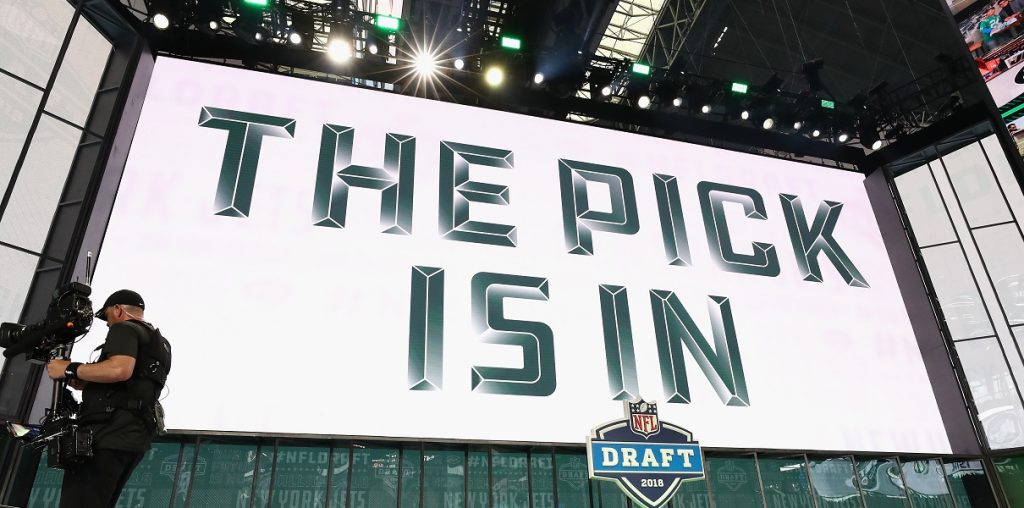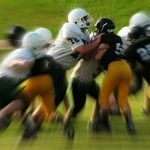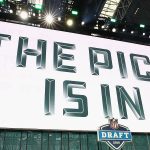A well-organized draft board is crucial for a successful fantasy football league, especially when managing a 10-team format. This article will guide you through the key considerations and strategies for setting up an efficient and engaging 10-team fantasy football draft board.
Understanding the Basics
Before diving into the specifics of the draft board, it’s important to grasp the fundamentals of fantasy football. In a 10-team league, each team owner drafts NFL players to create their team. The performance of these players in real-life games translates into points for the fantasy team. A draft board facilitates this process by tracking which players have been selected and which remain available.
Choosing the Right Draft Board
The first step is selecting the type of draft board that best suits your league’s preferences. There are two main options: a digital draft board or a physical one. Digital boards are convenient for online drafts and offer real-time updates and easy access. Physical boards, on the other hand, provide a tangible, traditional draft experience and are often preferred for in-person drafts.
Draft Board Customization
Customization is key to accommodating the specifics of a 10-team league. This includes the number of rounds, player positions, and any unique league settings. Ensure your draft board has enough slots for all the rounds your league will conduct, typically 15-20 rounds for a roster that includes quarterbacks, running backs, wide receivers, tight ends, kickers, and defense/special teams.
Player Rankings and Tiers
Prepare your draft board with pre-drafted rankings of players based on their projected performance in the upcoming season. Organizing players into tiers based on their expected value can help team owners make informed decisions during the draft. This setup aids in visualizing the depth of talent available at each position and strategizing picks accordingly.
Incorporating Flexibility
A 10-team draft board should allow for flexibility in draft strategies. This means accommodating various drafting methods, such as snake or auction drafts, and providing space for team owners to note their preferred players or sleeper picks. Flexibility also involves updating the board easily as trades or picks occur.
Interactive Features
For digital draft boards, incorporating interactive features enhances the drafting experience. This can include player search functions, the ability to queue players for future picks, and notifications for when it’s a team owner’s turn to draft. These features keep the draft flowing smoothly and engage participants throughout the process.
Visibility and Accessibility
Ensure that the draft board is easily visible to all team owners throughout the draft. For physical boards, this means a large display in a central location. For digital boards, ensure that the interface is user-friendly and accessible from various devices, such as laptops, tablets, or smartphones.
Live Updates and Support
For both digital and physical draft boards, providing live updates on player selections and available players is crucial. Digital boards typically handle this automatically, but for physical boards, assign a league member to update the board in real time. Ensure there’s support available for any technical issues that may arise with digital boards.
Post-Draft Analysis
After the draft, use the board to offer a post-draft analysis, highlighting the strengths and weaknesses of each team’s roster. This can foster competitiveness and engagement within the league.
Year-Round Utility
Consider using the draft board beyond the draft itself, for tracking player performance, waiver wire pickups, and trades throughout the season. This can keep the league active and engaged all year.
A well-planned 10-team fantasy football draft board is a cornerstone of a fun and competitive league. Whether you opt for a digital or physical board, customization, flexibility, and interactive features are key to a successful draft. By following these guidelines, you can ensure a smooth and enjoyable draft experience for all participants.
Enhancing Engagement Through Draft Day Traditions
Creating traditions around your draft can significantly enhance the overall experience. For a 10-team league, consider incorporating unique rituals or activities that make draft day memorable. This could include themed draft parties, where team owners dress up as their favorite players or football icons, or hosting the draft at a notable location, such as a sports bar or even a stadium, if feasible.
Leveraging Technology for Efficiency
For leagues opting for a digital draft board, leveraging technology can streamline the drafting process and add layers of strategy. Utilize platforms that offer predictive analytics, expert advice integration, and real-time injury updates. These features can aid decision-making and ensure that team owners are making the most informed choices possible.
Social Interaction and Communication
A key aspect of fantasy football is the social interaction it fosters among participants. Ensure your draft board or platform supports communication channels, such as chat functions or forums, where team owners can discuss picks, propose trades, or simply banter. This social component can significantly enhance the engagement and enjoyment of the league.
Custom Rules and Settings
Your draft board should reflect any custom rules or settings unique to your league. This could involve specific scoring systems, positional requirements, or keeper league considerations. Make sure these rules are clearly communicated and integrated into the draft board setup to avoid confusion and ensure fair play.
Accessibility and Inclusivity
Ensure your draft is accessible and inclusive for all participants. This means considering the needs of team owners who may not be as technologically savvy, providing clear instructions, and offering assistance as needed. For physical drafts, consider accessibility for individuals with disabilities to ensure everyone can participate fully.
Mock Drafts and Preparation
Encourage team owners to participate in mock drafts, using the draft board setup to familiarize themselves with the drafting process and test different strategies. This preparation can make the actual draft run more smoothly and allows team owners to approach their picks with confidence.
Reflecting on Past Drafts
Use your draft board to reflect on past drafts and seasons, analyzing which strategies worked well and which did not. This historical perspective can inform future decisions and add an extra layer of strategy to the draft process. It also serves as a fun way to reminisce about the league’s history and notable moments.
Continuous Improvement
After the draft, solicit feedback from team owners on the draft board and process. This feedback can be invaluable in making improvements for future drafts. Whether it’s enhancing the user interface of a digital board, adjusting the layout of a physical board, or refining the draft process, there’s always room for improvement.
The draft is a foundational element of the fantasy football experience, and a well-executed draft board is key to its success. By prioritizing customization, engagement, and strategy, while also embracing tradition and technology, you can create a draft experience that is not only efficient but also highly enjoyable for all participants. Remember, the goal is to kick off the fantasy football season on a high note, setting the stage for a fun, competitive, and memorable year.
FAQ on 10-Team Fantasy Football Draft Board
How many players should each team draft?
The number of players each team should draft depends on your league’s roster settings. A typical roster might include 1 quarterback (QB), 2 running backs (RB), 2 wide receivers (WR), 1 tight end (TE), 1 flex (RB/WR/TE), 1 kicker (K), 1 defense/special teams (D/ST), and 6-7 bench spots. This setup leads to a draft of about 15-20 players per team.
Should we use a snake draft or an auction draft?
The choice between a snake draft and an auction draft depends on your league’s preference for strategy and fairness. A snake draft is simpler and more straightforward, where the draft order reverses each round. An auction draft gives everyone a chance at every player but requires more strategy and can take longer. Both formats can be accommodated on most draft boards.
How do we decide the draft order?
The draft order can be decided randomly, by last season’s standings (with the last place team drafting first), or through a pre-draft competition or lottery. Ensure the method you choose is agreed upon by all league members to maintain fairness.
Can we make trades during the draft?
Yes, trades during the draft are allowed in most leagues and can include players, draft picks, or a combination of both. Make sure your draft board or platform can accommodate these changes in real time to keep the draft flowing smoothly.
How do we handle absent team owners during the draft?
For absent team owners, consider setting up auto-draft settings based on pre-ranked players or allowing another league member to make selections on their behalf. Ensure the approach is agreed upon before the draft to avoid any disputes.
What happens if a player is injured or cut from their team after our draft?
Most leagues allow for roster adjustments through waiver wire pickups or free agent signings. Set clear rules on how and when these transactions can occur to ensure fairness throughout the season.
How long does the draft typically take?
The length of the draft depends on the number of teams, rounds, and the time allotted for each pick. A 10-team league with 15 rounds and a 2-minute time limit per pick could take approximately 5 hours. Adjust the time per pick or the number of rounds to fit your league’s preferences.
How do we keep everyone engaged during the draft?
Keeping everyone engaged can be achieved through interactive features (for digital boards), social activities, and ensuring a smooth pace. Providing food, drinks, and breaks can also help maintain energy and focus throughout the draft.
Are there any recommended strategies for drafting?
While strategies vary, some common advice includes waiting on drafting quarterbacks (due to depth at the position), prioritizing running backs and wide receivers early (due to scarcity), and being adaptable to draft flow. Research and mock drafts can help refine your strategy.
How do we resolve disputes or questions during the draft?
Appoint a league commissioner or draft committee responsible for resolving disputes or questions. Establish clear rules before the draft and ensure all participants understand the process to minimize conflicts.
By addressing these FAQs, league members can enter the draft with a clear understanding of the process, rules, and strategies, leading to a more enjoyable and fair experience for everyone involved.




